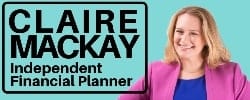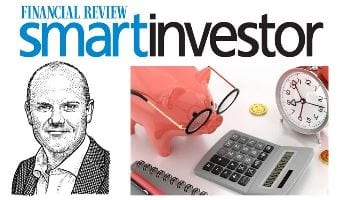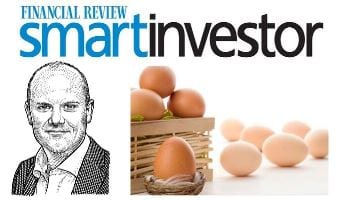Our clients live exciting lives and come from an amazing array of backgrounds. We love to share stories about them. If you have something interesting to share, please let us know!
Ever since we can remember, we at Quantum Financial have attended the Sydney Test. In the first week of January you can find us in the MA Noble Stand, next to the traditional Members’ Stand.
One of our wonderful clients, Donald Scott-Orr, is an avid cricket fan with family ties to one of Australia’s greatest ever cricketers. He gave this speech when accepting MA Noble’s induction into the NSW Cricket Hall of Fame.
Acceptance speech for MA Noble induction into NSW Cricket Hall of Fame
Steve Waugh Medal Night, Cricket NSW, Hilton Hotel, Sydney
My first name, Donald, comes from another quite good Australian cricket captain. My middle name, Noble, comes from my mother’s maiden name. Hence my presence in this galaxy tonight.
Mum was the daughter of Rev. Henry John Noble, eldest brother of 8 boys, four of whom played for Paddington Cricket Club. Charles, Edwald (not Edward as in cricket records – he played 7 cricket matches for NSW) and Montague Alfred. These four played for Paddington Cricket Club. Monty was youngest. They were all musicians also.
Monty was a bell ringer at St Mark’s church, Darling Point, Sydney and a member of the Sydney Choral Society chorus. He sang in the choir of St Marks and took part in a concert in the Sydney Town Hall after the 1909 cricket tour as a baritone.
Monty’s nicknames included: ‘Mary Ann’ (also the name of a great aunt), ‘MAN’, ‘Alf’, ‘Boots’ and ‘Monty’. I knew him as ‘Uncle Alf’.
His mother, Maria, famously poked a spectator firmly in the back, with her umbrella, when he had loudly barracked ‘Mary Ann’. She berated him with: ‘That’s my son you’re taliking about!’ and later apologised to her son saying she would never have given him those initials if she had known that would happen.
MONTAGUE ALFRED NOBLE (28th January 1873 -1940) was born in Sydney.
He was described as modest, gullible and helpful to everybody – nothing too much trouble. A big man with nature to match and very high principles.’
(He was known to have insisted on one of his batsmen, who had jumped the fence to get quickly to the wicket when time was running out, taking the proper entry to the ground, through the gate, when it was to his team’s disadvantage.
On another occasion he sent one of his team home to shave before allowing him on the field.
Bill Hunt, who also played for NSW and Australia, told me he was beckoned over in the members stand and pulled up for chatting with the girls on the boundary. He explained to Monty that he was only chewing gum!)
‘Everybody owed him money. Most of the cricketers were his patients and not very good payers.’
He began working in the bank and then became a dentist, to allow more time for cricket. He is believed to have done a lot of free dentistry for the poor. Later he left dentistry to become a sales agent.
Bill Ferguson had gone to ‘Monty’ as a patient in 1905, for gold fillings, in order to obtain his recommendation for the post of baggage-master and scorer for the Australian team. He also sent his sister to have her teeth fixed.
On 14th January 1914, at age 40, Monty (6′ 1″) married Elizabeth Ellen Ferguson (5′ 5″).
Better known as a cricketer than baseballer, he played for NSW at age 20 and Australia at age 24 years. He topped Australian seasons’ batting averages four times (This was a record until the coming of Bradman). In 245 first class games he totalled 14,000 runs at an average of 40, and 628 wickets at 23. Of his 37 centuries, 7 passed 200 – highest 284, in the still standing highest sixth wicket partnership by an Australian pair*; 428, with Warwick Armstrong.
He averaged a wicket every 59 balls in Tests (121 in 49 Tests) – one ball better strike rate than Lindwall’s. He reached 1,000 runs and 100 wickets in 27 Tests – five Tests fewer than Benaud, six fewer than Miller and Tate, seven fewer than Davidson. I understand that Glen McGrath reached his 100 wickets in 23 Tests and by that time must have been well on his way to 1,000 runs.
After the First World War, when cricket was being re-established, he played for N.S.W. at age 46, scoring a 50 and taking 7 wickets in the match. In his farewell match in Brisbane he strained a leg muscle while batting and his substitute runner (Ted Adams, later Town Clerk of Sydney) was run out when he was on 37.
He played Test cricket from 1898 and was captain from 1903 – 1909.
Multisportsman and writer, Charles (C.B.) Fry, who played for England, nominated him for ‘captaincy of an Earth X1 to play Mars’. At the time he was considered by many the world’s greatest all-rounder and a great tactician.
Ray Robinson, author of books on cricket, rated him: ‘the most accomplished cricketer Australia produced as bowler, batsman, captain and fieldsman, at least in the pre-1954 era of all-weather Test wickets.’
He was named Wisden Cricketer of the Year in 1900. To quote:
‘He began the tour with ‘a superb innnings of over 100 in the opening match at the Crystal Palace, and all through the summer till the tour was over he was one of the great mainstays of the Australian eleven…..Noble was potentially a great batsman before his ability as a bowler was realised, even in his own club…..Easy and graceful in style he seems like all great batsmen to have plenty of time when playing back….No Australian batsman has ever shown better cricket during a first visit to England. As a bowler he has plenty of spin and varies his pace well…A good deal has been said about his ability to make the ball swerve in flight, and there can be no doubt that this peculiarity in his bowling puzzled many of our batsmen, especially during the early part of the tour. Over and above his batting and bowling Noble is a superb field at point – quick, agile and fearless. He first became known to English cricketers during the tour of Mr Stoddart’s first team in Australia, when for Eighteen Sydney Juniors he scored 152 not out.’
In his obituary Wisden said:
“During his long career, Noble showed exceptional ability in every detail of the game, and by many people was regarded as the greatest all-round cricketer produced by Australia,” The Australian Cricket Hall of Fame recognised his status as a “sporting legend” with induction in 2006.
After retiring from first-class cricket in 1920, he continued as a mentor to young players and administrator, and for a season was sole State selector. He was a pioneer in broadcasting Test matches, giving expert commentary and summaries of Tests in the first radio broadcasts.
(I recall, at an early age listening to these broadcasts on a battery radio my father had made.)
Alan McGilvray, one of Austalia’s great sporting commentators and former captain of N.S.W. cricket, was recommended by him to the General Manager of the Australian Broadcasting Commission, Charles Moses. Alan was coached in cricket by him for 15 years and says (personal communication) he ‘owed everything I gained in cricket to Mr Noble – the greatest man I knew.’ Alan showed the Test cricketer Neil Hawke how M.A.N. bowled his slower ball and Neil later told Alan that of his 189 Test wickets he reckoned he’d got 102 with that ball.
Died 22.6.1940, a week after playing in a social game of cricket.
He wrote: ‘The Game’s The Thing’, ‘1928 – 29, The Fight For The Ashes’, ‘Those Ashes, The Australian Team of 1920’, and ‘Gilligan’s Men’.
He was a shareholder and director of the Ascot Racing club south of Sydney.
He and Victor Trumper were members of the first NSW baseball team in 1900. He played baseball for NSW in four years, 1900, 1901, 1903 and 1907 and captained the team in each series. He played with the Paddington Baseball Club in the Sydney Major League competition, First Grade premiers in 1901, 1903, 1904 and 1908.
It was thought that his special ability to swerve the ball out may have come from his experience in baseball.
In assessing Monty Noble’s representative baseball career it should be remembered that he was also an Australian Test cricketer, which means that when he was touring England during the northern hemisphere summer as a cricketer, he was not available in Australia as it was the winter baseball season in the southern hemisphere.
Monty Noble was a notable baseball administrator, was simultaneously a member of the SCG Trust until the time of his death on 22 June 1940, a week after playing a social game of cricket. He ‘was the driving force behind the building of the M.A. Noble Stand’ at that ground.
Cricket’s effect on Australian baseball can partly be attributed to Noble’s influence.
He advocated cricket in summer and baseball in winter and promoted baseball at every opportunity and deserves to be seen as the ‘patron of NSW baseball for the first half of the 20th century’.
(I only learned of his association with baseball after I had taken up baseball as an out of season sport to cricket – I had come to the same advocacy independently.)
From a Baseball Union proposal:
‘The fact that he was elected President for 21 years (1919 – 1941) consecutively warranted a nomination for Life Membership in the year after his death. I am unaware of the circumstances why this situation was never rectified but wish to correct the matter with this nomination. I believe it is appropriate to award him a posthumous Life Membership as the second longest serving President in NSW Baseball history.
That’s the ‘Monty’ Noble thing to do.
Donald Noble Scott-Orr.
Some sources:
My mother
NSW Baseball Union proposal for Monty’s Life Membership
‘On Top Down Under’ – Ray Robinson
Bill Hunt, former NSW and Australian Test cricketer
Alan McGilvray, former NSW cricket captain and cricket braodcaster
———–
6th wicket:
487* GA Headley and CC Passailaigue Jamaica v Lord Tennyson’s XI Kingston 1931-32




